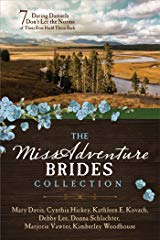
I’ve had three encounters with the unseen world in my lifetime.
“Who is with you?” the nurse asked. “Jesus,” she replied.
- My husband’s grandmother lay in a hospital room dying. She’d always been afraid of death, afraid of the cold ground, afraid to be left alone. She was a believer, but this one promise eluded her. Her roommate suddenly died in the night. The nurses, aware of Grandma’s fear, asked if she’d like to be removed from the room. Grandma smiled sweetly and said, “No, I’m alright. He’s here with me.” She gazed at the corner of the room, the bare corner. “Who is with you?” the nurse asked. “Jesus,” she replied. Grandma saw Jesus, who had come to allay her fears, perhaps instruct her that she need not be afraid. Grandma died a few days later. Her face, that had been pinched in pain for many years now looked like that of a much younger woman. Pain and wrinkle free, the thing that struck us most was the absolute peace draped over her body like fine linen. Grandma had seen Jesus, and He had taken her home.
“It’s okay, …I know I’m going to heaven.”
- My grandfather, also lay in a hospital room dying. Grandpa was a self-proclaimed atheist. As my mother visited in those final days, she would ask him if she could tell him about Jesus. He’d refuse every time. His last day, she came in and insisted she talk to him before he left her. He smiled and said, “It’s okay, Kathy was here. We talked and I know I’m going to heaven.” Thing is, I’m the Kathy to whom he referred, and I was over 5500 miles away in Germany. The day before, my mother had called to tell me Grandpa was dying. I knew he hadn’t accepted Christ as his Savior. More than wanting to keep him with me, I wanted his salvation because I know I will see my loved ones again—and this loved one was especially dear to me. I stood in my kitchen that evening, cleaning up after supper and praying, when I suddenly stopped and gasped. “Please don’t let Grandpa slip into eternity without knowing You!” Then, peace entered my being. The next day my mother called. Grandpa had died. I began grieving, knowing he was gone—forever. But then she told me the account that I mentioned above. He had seen me, Kathy. We talked. Mom and I compared when that conversation might have happened, and we determined it was at the same time I gasped that prayer. Now, I don’t know if it was really me, an angel that looked like me, or even perhaps the sister who had died five years before I was born and could have been my twin. I don’t know. But God knows. He sent someone in there who looked like me because, quite frankly, I had my Grandpa wrapped around my finger. How could he say no to me?
Whoever this was stood by his side, and he was filled with peace.
- My father, a strong man of faith, lay in a hospital room dying . He was in Oregon, I was in Florida. I promised my mom that I would be there as soon as I could get a flight out. When I arrived, she met me at the airport. Before my bags even arrived she told me to brace myself. Immediately, I imagined the worst. My daddy had slipped away before I could say goodbye. But, no. She said that, the night before, she told him I was coming. He looked confused. He said, “But Kathy was already here.” She argued, repeating that I was on the way and that my flight would arrive the next day. He shook his head. Apparently I—or the angel, or my sister—visited him. Whoever this was stood by his side, and he was filled with peace. It would be several weeks before he walked into eternity. My mom and sister (the living one) took nighttime vigils with him the last few days so he wouldn’t be alone. One night, he stirred and I stood by his side. When he saw me, he startled. I stroked his hand and said, “It’s okay, Dad. It’s me, Kathy.” A look of relief flooded his face. It could be my writer’s imagination, but did he think I was that other Kathy who had come to usher him home? At that point, I don’t believe he was ready to leave Mom yet.
Little Colton Burpo has it right. Heaven is for real. It thrills me that his story is being made into a motion picture. I may, someday, put my experiences with the after-life into a book, but for now, I pray that everyone goes to see this movie.
How important is it to get our stories of faith out there? According to Entertainment Weekly, the director, Randal Wallace (Secretariat) was quoted: “I’m amazed it got to me. I’ve been around churches all my life and I’ve been exposed to a lot of material that would be categorized as inspirational. Most of the stuff is anything but inspirational for me. But I found this story to have an incredible intrigue and emotional power,” he said. “It speaks to the cynic in most of us.”
Here is the trailer of Heaven Is for Real. Just watching it brought tears to my eyes. I have a feeling I will be a mess when I see this in the theater.





























